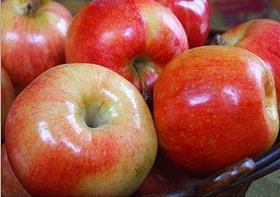
In the short term at least, it’s a problem that has the potential, if you’ll excuse the pun, to wax before it wanes. Morpholine, the organic chemical compound added to wax by some fruit shippers in order to help it stick to their fruit, was banned in the UK last year. Why is it added? Ostensibly to provide an attractive sheen, particularly to apples, but it is also said to help prevent dehydration (important when, as some have suggested, as much as 10 per cent of the fruit’s weight might otherwise be lost) and maintain firmness. A number of packers in the US state of Washington do indeed use the substance, and since the issue arose the region’s apple shipments to Europe have declined dramatically.
The fact that the UK ban is based on an EU-wide food safety regulation raises doubts over the upcoming Southern Hemisphere apple campaign in Europe. It’s widely known that a number of shippers in Latin America also use Morpholine on apples they send to the US, Canada, Mexico, Russia and Japan, all of which incidentally allow the compound. While Europe’s imports from those same suppliers might not necessarily have Morpholine and wax applied to them directly, the potential for cross-contamination is not going to be lost on the authorities. Apple exports from Washington to Europe are said to be down by almost half; for Latin America, the potential disruption this year could be at best a nuisance and at worst a catastrophe.
During last month’s Fruit Logistica, a special meeting of suppliers, traders, marketers and technical experts was convened by Pace International, makers of Morpholine and one of the world’s leading providers of cleaning and sanitising compounds, fungicides, coatings and other products to the fresh produce business. Pace’s president, George Lobisser, told those at the meeting that the firm was “unequivocally focused” on resolving the situation, but he also urged packers and exporters to avoiding using Morpholine – or indeed any of four other amine-based compounds currently in use worldwide – in order to coat any type of fruit.
Months after traces of the coating were detected by a German laboratory and the results were subsequently picked up and acted upon by the UK’s Food Standards Agency, the issue is poised to develop into a legal wrangle between the European Commission’s food safety authorities and Pace, which is considering filing a formal petition to have Morpholine declared a permitted food additive under European law. Alternative arguments have been considered: in October 2010 Pace submitted a document to the EU arguing that Morpholine might be viewed in legal terms as a processing aid – an argument which seems plausible given its tendency to break down and disappear by the time fruit reaches market. However, as of last month, Pace had received no formal response. “We don’t expect to hear back on this unless we apply some pressure,” said Pace’s legal advisor Jean Savigny.
The main problem with the processing aid argument appears to revolve around the way in which such products are regulated within the EU, given that they are registered at member state level rather than in Brussels. In fact, only France and Denmark registers such aids using a positive list. While the term is legally defined by a European Council directive, interpretation does vary and, as a result, the EC has since sought to establish objective criteria for the distinction between products used as food additives, processing aids or ingredients.
Whatever the legal outcome, Morpholine’s card has been indelibly marked. Six German test centres and one in the UK are now reportedly on the look-out for traces not only of Morpholine but of the other five amines in circulation. The issue affects not just apples but any other product which is waxed; imported citrus, avocados and, most recently, mangoes have all been discovered with traces of Morpholine on them and subsequently blocked. As far as the EU market is concerned, and despite being recognised by the USDA among others as safe for human consumption, amine-based coatings are distinctly non grata. The amount applied to the fruit – estimated to be about 0.2ml per piece – might be negligible, but for some exporters, unless suitable alternatives can be found which meet the regulations, Europe will begin to lose its shine.



